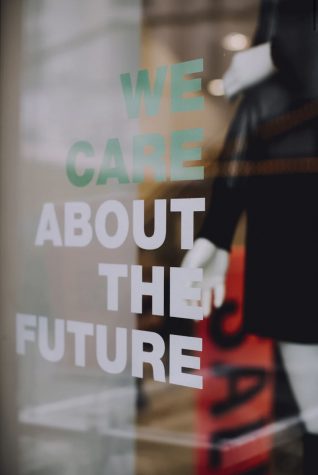The stigma around thrift stores needs to end
In the past, shopping at thrift stores was often looked down upon, but now shopping culture has drastically revamped. The recent rise in popularity of thrift stores began as people started to realize they could find vintage and name brand clothes for much cheaper than at retail stores. However, with the hype around these stores, there is guaranteed to be a backlash.
Many people are under the impression that thrift stores should be exclusive to only those that desperately need the clothes and cannot afford them anywhere else.
Staff at Berkeley Economic Review explain, “Thrifting no longer carries strong taboos of uncleanliness and poverty as it had in the past. So, in the name of eco-consciousness, many demographics that could afford to splurge on high-quality, low-impact purchases are deciding to thrift instead. This means there are less quality items left on the thrift store shelves for those who truly have no other affordable options.”
While it may seem like people who do not need to rely on thrift stores are taking all of the clothes, that is not the reality of it. There is certainly no shortage of clothes being donated to these stores as they restock constantly and their racks are rarely empty. The more people that are buying from thrift stores, the better. Supporting thrift stores and buying donated clothes has many more benefits than shopping at normal retail stores.

Michelle Schroeder-Gardner with Making Sense of Cents states, “Buying second-hand doesn’t just save you a ton of money, it prevents waste and lessens the number of things piling up in landfills.”
The average American throws away up to 81 pounds of clothing every year alone; each piece of clothing taking years to decompose. This high number is a result of people buying from fast fashion companies. These are companies that mass-produce clothes under harsh conditions and low costs. They are commonly known to throw away products that don’t fit into the current fashion trends, often wasting perfectly good clothes. Donating and buying second-hand helps dramatically reduce the number of clothes being put into landfills and actively fights against the fast fashion industry.
When deciding where to buy their next clothes, A-West students are extremely aware of the benefits of shopping second hand and the current issue surrounding fast fashion companies.
Sophomore Caitlyn Solorzano explains her thoughts on fast fashion, “I think that most people who buy from them don’t know that it is happening so we need to spread awareness on the topic and thrift more.”
The fast fashion industry is so huge that the terrible effects it has on the environment is often overlooked. By thrifting, people can save so much more money and have it be put back into helping with donations and even charities in some cases such as with the Salvation Army.
Sophomore Cami Doody has a good mindset when it comes to thrifting in that “Instead of wasting an item you don’t like, donate it because someone else might want it.”
While it is not guaranteed that donated clothes will end up in the hands of someone that desperately needs it, the clothes will have a second chance with someone that wants it. It does not matter whether that person is rich or poor as long as the clothes avoid the landfill.
Not only is thrifting environmentally beneficial, many argue that it is much more fun than shopping at normal retail stores for many reasons.

Solorzano states, “I would recommend it to friends because you can find unique clothing for an affordable price and it could be a fun shopping trip.”
Walking into a single store and finding all kinds of clothes is a dream for so many. While thrifting is a fun experience, there are many things to keep in mind: remember that patience is key, keep a lookout for clothes on sale, and be creative when shopping.
Teens need to understand that thrifting at a young age can dramatically help the environment in many ways in the future. Being able to have fun shopping while also saving money and preventing clothes from going into landfills is enough of a reason to start thrifting. Whether it be a full switch to second-hand clothing only or just one item every now and again, anyone can and should make that simple change. It does not take much to make a simple switch to end the unnecessary stigma revolving around thrift stores.

Haylee Griffith is a junior this year and this is her third year on staff. She has had a passion for writing and painting since she was little and enjoys...



